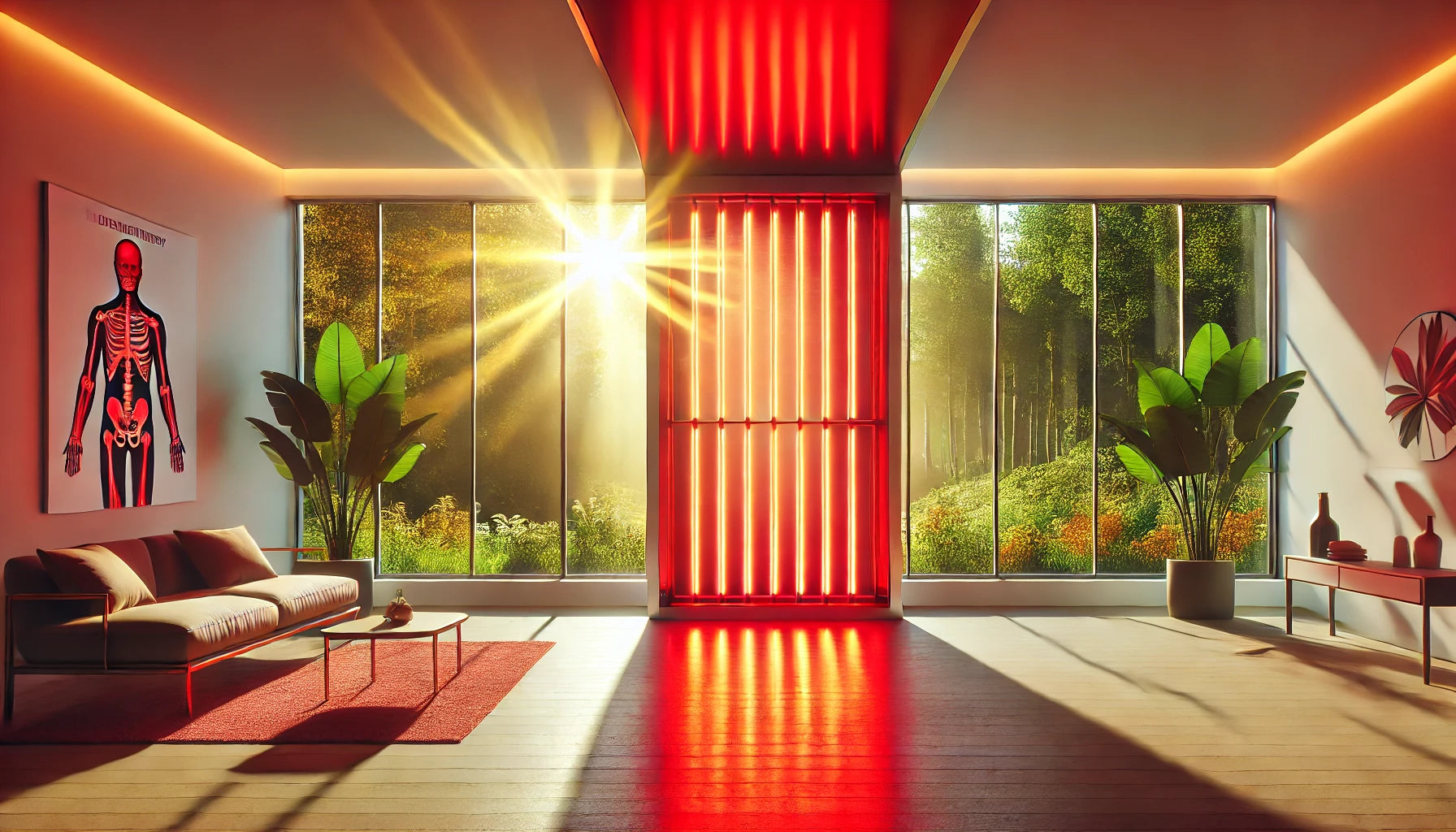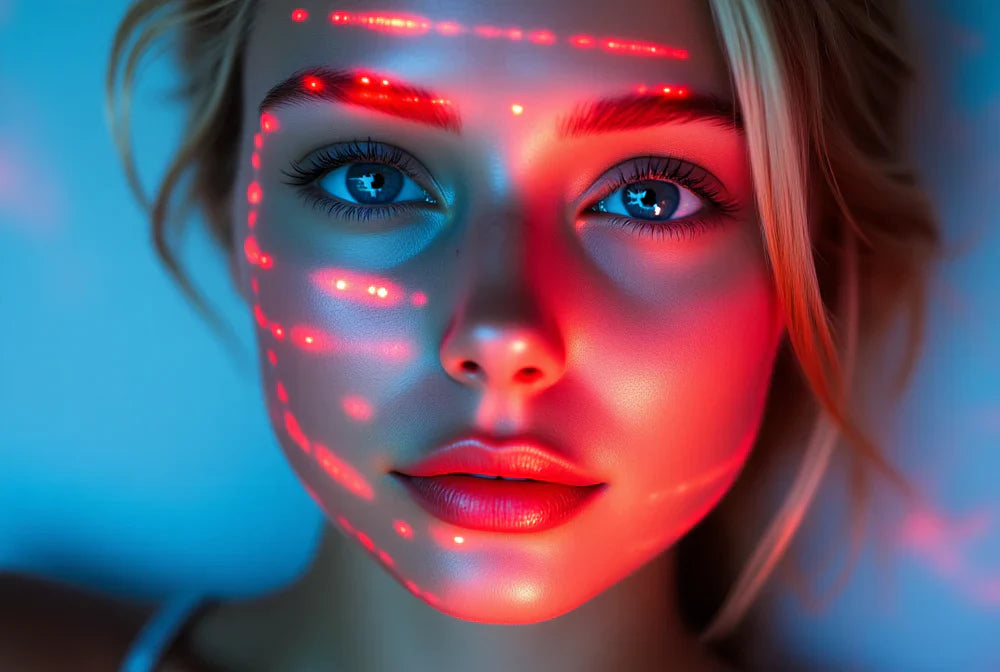As we strive for healthier lifestyles amidst the demands of modern living, the allure of natural and innovative therapies becomes ever more compelling. Red light therapy, a burgeoning trend in holistic health, invites us to reconsider our relationship with light and its profound impact on our bodies. But how does it compare to the sunlight that has been our constant companion throughout history? This article explores the nuanced differences between red light therapy and sunlight, offering clarity for those seeking safe, effective, and convenient ways to boost their health and well-being. Whether you're looking to enhance your skin, improve recovery, or simply understand the science, this guide is your beacon to informed wellness choices.
What Is Red Light Therapy?
Harnessing the power of specific red and near-infrared light wavelengths, red light therapy is a non-invasive treatment that penetrates the skin to stimulate cellular function. This innovative approach is designed to bolster the body's natural healing processes by enhancing energy production within cells, diminishing inflammation, and accelerating tissue repair. Red light therapy targeting the mitochondria can increase collagen production, enhance circulation, and facilitate muscle recovery, making it a versatile solution for skincare, pain management, and holistic wellness. With a foundation in scientific research and a growing body of supportive evidence, red light therapy offers a promising, UV-free alternative for those sensitive to UV light and those aiming to elevate their health.
What Is Sunlight and Why Is It Important?
Sunlight is the natural light emitted by the sun, encompassing a spectrum of electromagnetic radiation that includes visible light, ultraviolet (UV) rays, and infrared radiation. It is a fundamental force of nature, essential for life on Earth, playing a crucial role in various biological processes. Sunlight is vital for the synthesis of vitamin D in the skin, which is essential for bone health, immune function, and overall well-being. Moreover, exposure to sunlight helps regulate circadian rhythms, influencing sleep patterns and mood. It also supports photosynthesis, the process by which plants convert light energy into chemical energy, sustaining the food chain.
Benefits of UVA Radiation
1. Skin Tanning: Stimulates melanin oxidation, leading to a tan, which provides some natural protection against further UV damage.
2. Vitamin D Synthesis Support: While UVB is primarily responsible, UVA aids indirectly by preparing the skin for effective vitamin D production.
3. Phototherapy for Skin Conditions: Used in controlled doses to treat skin disorders like psoriasis, eczema, and vitiligo.
4. Mood Enhancement: Exposure to UVA light may trigger the release of endorphins, improving mood and reducing the risk of Seasonal Affective Disorder (SAD).
5. Wound Healing and Anti-Inflammatory Effects: Low doses of UVA are sometimes used in medical treatments to promote wound healing and reduce inflammation.
Benefits of UVB Radiation
1. Vitamin D Production: Essential for synthesizing vitamin D in the skin, which supports bone health, immune function, and overall well-being.
2. Immune Regulation: Moderate exposure can enhance immune response and regulate autoimmune diseases.
3. Treatment of Skin Conditions: UVB therapy is widely used for conditions like psoriasis, vitiligo, and atopic dermatitis, as it slows the growth of abnormal skin cells.
4. Natural Antibacterial Properties: UVB radiation helps kill harmful bacteria on the skin, aiding in skin health.
5. Stimulates Skin Renewal: Promotes keratinocyte proliferation, aiding in the regeneration of skin and healing minor injuries.
-
Important Note
Moderation and Protection: While there are benefits, overexposure to UVA and UVB can lead to skin damage, aging, and increased risk of skin cancer. Proper sun protection and controlled exposure are crucial.
Medical Supervision: Phototherapy for medical purposes should always be done under professional guidance.
-
Red Light Therapy vs Sunlight: What’s The Difference?
Wavelengths and Light Spectrum
- Red Light Therapy: Utilizes specific wavelengths of red and near-infrared light, typically ranging from 600 to 1000 nanometers. These wavelengths are carefully selected to penetrate the skin and stimulate cellular processes.
- Sunlight: Comprises a broad spectrum of electromagnetic radiation, including visible light, ultraviolet (UV) rays, and infrared radiation. While sunlight provides essential benefits, its UV component can pose risks such as skin damage and increased cancer risk.
Important Note
Moderation and Protection: While there are benefits, overexposure to UVA and UVB can lead to skin damage, aging, and increased risk of skin cancer. Proper sun protection and controlled exposure are crucial.
Health Benefits
- Red Light Therapy: Known for promoting cellular energy production, reducing inflammation, and accelerating tissue repair. It is particularly effective for enhancing skin health, supporting muscle recovery, and managing pain without the risks associated with UV exposure.
- Sunlight: Essential for vitamin D synthesis, which is crucial for bone health and immune function. Sunlight also helps regulate circadian rhythms, influencing sleep and mood. However, prolonged exposure to UV rays can lead to skin damage and other health issues.
Important Note
Moderation and Protection: While there are benefits, overexposure to UVA and UVB can lead to skin damage, aging, and increased risk of skin cancer. Proper sun protection and controlled exposure are crucial.
Accessibility and Control
- Red Light Therapy: Offers a controlled environment where exposure to specific wavelengths can be precisely managed, making it a convenient option for indoor use. Devices are available for personal and professional use, allowing for targeted treatments. These devices can give you your daily requirement of red infrared and UV light in a fraction of the time.
- Sunlight: Naturally abundant and free, but its availability can be limited by geographic location, weather conditions, and seasonal changes. Exposure levels are less controllable, which can lead to overexposure to UV rays.
Important Note
Moderation and Protection: While there are benefits, overexposure to UVA and UVB can lead to skin damage, aging, and increased risk of skin cancer. Proper sun protection and controlled exposure are crucial.
Safety and Risks
- Red Light Therapy: Considered safe for most individuals when used as directed, with minimal side effects. It provides therapeutic benefits without the risk of UV-related skin damage.
- Sunlight: While beneficial in moderation, excessive exposure to UV rays can cause skin aging, sunburn, and increase the risk of skin cancer. It is important to balance sun exposure with protective measures like sunscreen and clothing.
Important Note
Moderation and Protection: While there are benefits, overexposure to UVA and UVB can lead to skin damage, aging, and increased risk of skin cancer. Proper sun protection and controlled exposure are crucial.
By understanding these differences, individuals can make informed decisions about how to best incorporate light exposure into their wellness routines, optimizing the benefits while minimizing potential risks.
How Much Red Light Is In Sunlight?
Sunlight contains a broad spectrum of light, including red light, which is part of the visible spectrum. However, the amount of red light in sunlight is relatively small compared to the entire spectrum it encompasses. Red light in sunlight is typically found at wavelengths between 620 and 750 nanometers, contributing to the warm hues we perceive during sunrise and sunset. Despite its presence, the intensity and concentration of red light in natural sunlight are not as targeted or potent as those used in red light therapy devices. These devices are specifically designed to emit concentrated red and near-infrared wavelengths to maximize therapeutic benefits, such as enhancing cellular function and promoting healing, which are not achievable through ordinary sunlight exposure alone.
Can You Go In The Sun After Red Light Therapy?
Yes, you can go in the sun after red light therapy, but it is important to take certain precautions to protect your skin. Red light therapy itself does not make your skin more sensitive to sunlight, as it does not involve UV radiation. However, maintaining a balanced approach to sun exposure is crucial to avoid potential skin damage from UV rays. After a session of red light therapy, it is advisable to apply sunscreen or wear protective clothing if you plan to spend extended periods outdoors. This ensures that you reap the benefits of both therapies—red light therapy's cellular rejuvenation and sunlight's vitamin D synthesis—while minimizing the risk of sunburn or long-term skin damage. By being mindful of sun exposure, you can safely enjoy the advantages of both red light therapy and natural sunlight.
Important Note
Moderation and Protection: While there are benefits, overexposure to UVA and UVB can lead to skin damage, aging, and increased risk of skin cancer. Proper sun protection and controlled exposure are crucial.
Does Red Light Therapy Improve Vitamin D?
Red light therapy does not improve vitamin D levels, as it does not involve ultraviolet (UV) light, which is necessary for the synthesis of vitamin D in the skin. Red light therapy may indirectly enhance vitamin D levels by reducing inflammation, as the inverse correlation between vitamin D and inflammation suggests that a decrease in inflammation can lead to an increase in vitamin D. Vitamin D production occurs when the skin is exposed to UVB rays from sunlight, which triggers a chemical reaction that converts cholesterol in the skin into vitamin D. Red light therapy, on the other hand, uses specific wavelengths of red and near-infrared light to penetrate the skin and stimulate cellular processes, such as enhancing energy production and reducing inflammation. While it offers numerous health benefits, including improved skin health and muscle recovery, it does not contribute to vitamin D synthesis. Therefore, individuals seeking to boost their vitamin D levels should ensure they receive adequate sunlight exposure or consider dietary supplements, especially in regions with limited sunlight.
How Do You Choose Between Red Light Therapy and Sunlight?
- Controlled Environment: Choose red light therapy over sunlight if you prefer a controlled environment where exposure to specific wavelengths can be precisely managed, ensuring consistent and targeted therapeutic benefits without the unpredictability of weather or time of day.
- Skin Sensitivity: Opt for red light therapy if you have sensitive skin or are concerned about the effects of UV radiation. Red light therapy provides the benefits of light exposure without the risk of sunburn or long-term skin damage associated with UV rays.
- Convenience and Accessibility: Select red light therapy when you need a convenient and accessible option that can be used indoors, regardless of geographic location or seasonal changes, making it ideal for those with limited access to natural sunlight.
- Specific Health Goals: Choose red light therapy if you have specific health goals, such as enhancing skin health, reducing inflammation, or accelerating muscle recovery, as it offers targeted benefits that are not achievable through sunlight alone.
- Time Efficiency: Opt for red light therapy if you are looking for a time-efficient solution that can be easily incorporated into your daily routine, providing quick sessions that deliver concentrated benefits without the need for prolonged sun exposure.
Important Note
Moderation and Protection: While there are benefits, overexposure to UVA and UVB can lead to skin damage, aging, and increased risk of skin cancer. Proper sun protection and controlled exposure are crucial.
Conclusion
Understanding the nuanced differences between red light therapy and sunlight empowers individuals to make informed choices tailored to their unique needs. While sunlight remains an invaluable natural resource, essential for vitamin D synthesis, the immune system, and circadian rhythm regulation, red light therapy offers a modern, controlled alternative that delivers targeted therapeutic benefits without the risks of UV exposure. By integrating both approaches thoughtfully, one can harness the rejuvenating power of light to enhance skin health, support muscle recovery, and promote overall well-being. As we continue to explore the potential of these light-based therapies, embracing a balanced approach ensures that we maximize their benefits while safeguarding our health.
Final Thoughts
At EMR-TEK, we pride ourselves on offering superior red light therapy devices that set the benchmark for quality and innovation. Whether you're looking for portable solutions or larger, more robust systems, our diverse selection caters to a variety of needs and settings. Explore our offerings and find the perfect device to support your wellness aspirations, backed by the assurance of advanced technology.
Sources
- https://education.nationalgeographic.org/resource/power-sun/
- https://www.uclahealth.org/news/article/ask-the-doctors-round-sun-exposure-vital-to-vitamin-d-production
- https://webbtelescope.org/contents/media/images/01F8GF658T060QGSSZYR1GD6GA
Disclaimer: EMR-TEK’s red infrared light therapy devices, blue light blocking glasses, and other products are intended solely for personal wellness and fitness use. They are not designed to diagnose, treat, cure, or prevent any disease and should not be considered medical devices. We do not make any therapeutic claims. Our products align with the FDA’s “General Wellness: Policy on Low Risk Devices” guidelines and do not require FDA clearance. Please note, EMR-TEK’s products are for personal use only and not for commercial application.




Share:
Is It Bad To Wear Blue Light Glasses When Not Looking At a Screen?
How To Depuff Face: Methods For Reducing Facial Puffiness